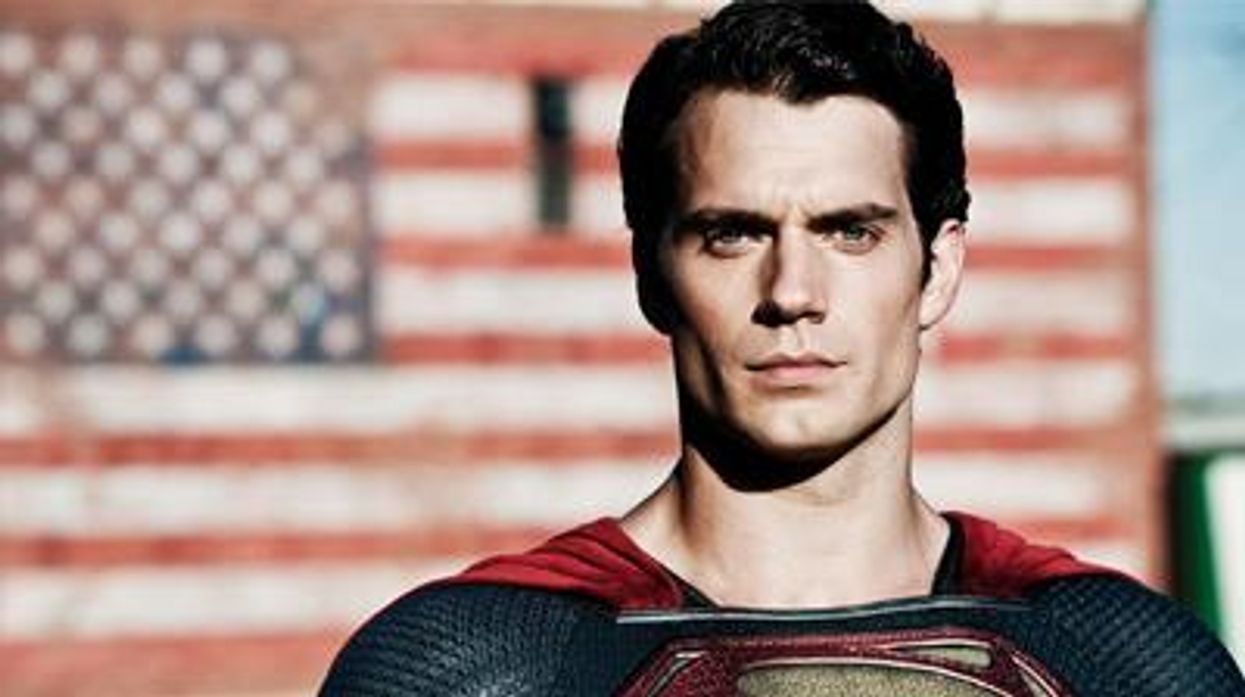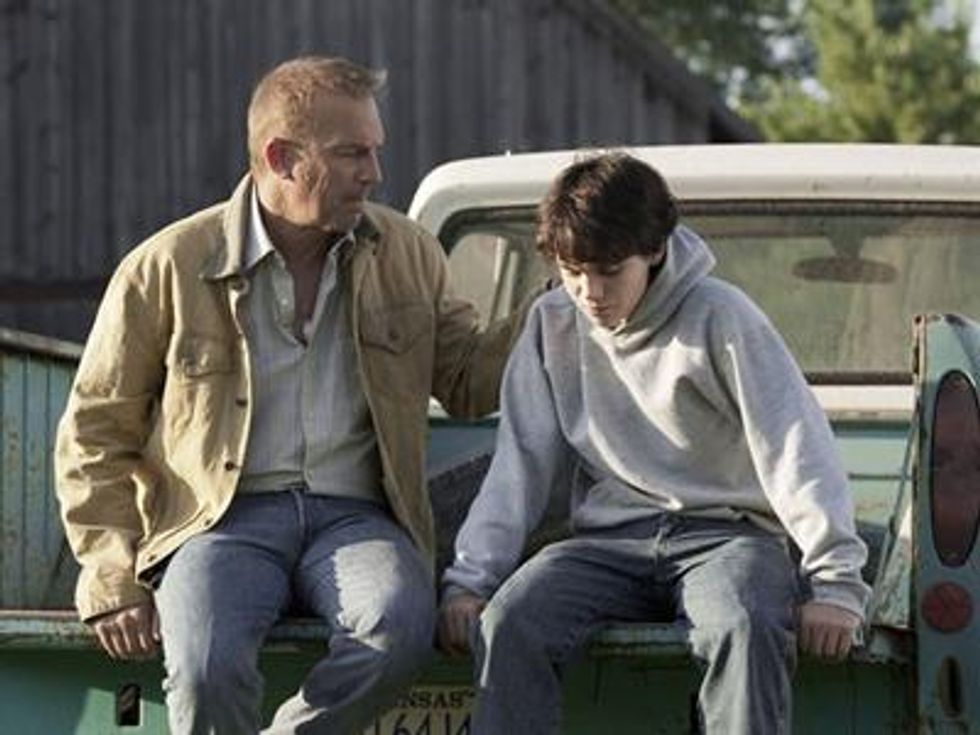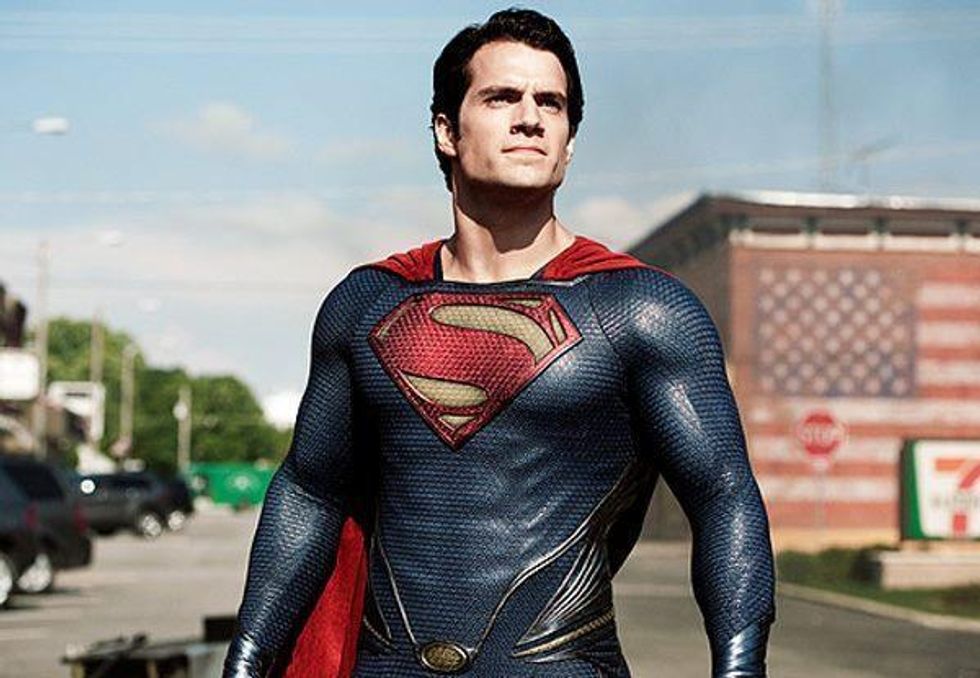
Advocate editor and lifelong Superman fan Jase Peeples reveals why the Last Son of Krypton's latest reboot is a gay allegory for our time.
June 14 2013 5:00 AM EST
By continuing to use our site, you agree to our Privacy Policy and Terms of Use.

Advocate editor and lifelong Superman fan Jase Peeples reveals why the Last Son of Krypton's latest reboot is a gay allegory for our time.
"Are you listening, Clark?" the young boy's teacher asks.
He is distracted, struggling to filter the thousands of sounds bombarding his auditory system. Her voice is one of many ringing in his ear. Confused by the scope of his developing super-hearing, Clark turns to face his elementary school teacher as his x-ray vision comes into focus. He sees her and his nearby classmates in ways he doesn't understand.
Frightened, he runs out of the classroom, down the hall, and locks himself in a broom closet. Through the locked door, he hears his classmates whispering, calling him "weird," and "freak," even as he clasps his hands tightly over his ears.
This scene from director Zack Snyder's Man of Steel is one of many that will resonate with LGBT viewers, and highlights why the latest Superman reboot may have more LGBT appeal than any other iteration of the story based on Kal-EL, the Last Son of Krypton.
Of course, it doesn't take x-ray vision to see why many LGBT people are drawn to the colorful world of comic book superheroes. From characters who struggle with secret identities to mutants who are despised by society because they are born different, the genre is practically overflowing with queer metaphors. But Man of Steel integrates several of these into Superman's mythology in novel ways.
Beyond the symbolism of a young Clark Kent locking himself in a closet as he struggles with parts of himself he doesn't yet understand but knows he must hide, the new film reimagines the origins of Superman at a fundamental level. In this version of the story, children are not born on Krypton, they are engineered to perform specific roles within Kryptonian society. Kal-EL is considered an abomination because he is naturally conceived by his parents Jor-EL and Lara -- an act that is illegal on their planet.
With homosexual acts still illegal in many nations around the world, this particular twist to the Superman mythos adds an even deeper dimensionality to a queer reading of Man of Steel. His status as an outsider who is born different positions Superman's story as an LGBT allegory in the same realm as Marvel's X-Men.
However, the film's LGBT sensibility doesn't end there. Numerous additional scenes also parallel common experiences in our community.

As Jonathan reveals young Clark's otherworldly origins to him for the first time, the fear of parental rejection is clear on the boy's face. "Can't I just keep pretending I'm your son?" he asks, not wanting the nature of their relationship to change now that they are both aware of who he really is.
Even the experience of bullying is not unknown to our hero in Man of Steel. At one point, two boys taunt a young Clark before pushing him down against a fence. Unlike the rest of us, Clark cannot be harmed by his attackers, but because he must hide who he really is, he still endures the emotional impact of being bullied.
More than any Superman film before, Man of Steel presents Kent as an outsider, struggling to find his place in a society where he does not see himself reflected. It's a predicament not unfamiliar to many in the LGBT community -- especially those who grew up in an era before gay characters were commonplace in media, when others like us could be discovered faster than a speeding bullet through the internet.
But while the struggles of this Superman make him more relatable than ever to LGBT fans, his journey throughout the film is also an inspirational one, as Clark reaches his full potential only when he embraces his differences and comes out of the closet as a Kryptonian.
"My father believed if the world found out who I really was, they'd reject me. He was convinced that the world wasn't ready," a grown Clark, now Superman, tells Lois Lane in Man of Steel. It's a moment in the film that reflects the current state of our own struggle for equality.

After coming out as Kryptonian, Superman asks Lois, "What do you think?" It's a vulnerable moment that parallels our own modern questions around social morality, as we await the U.S. Supreme Court's decisions regarding marriage equality and ask, "Is America truly ready to accept us?"
Superman has endured for 75 years, no doubt in part because he is a character who can be interpreted in multiple ways. For some, he's a messiah -- the only son of a powerful being, sent to Earth to deliver us from evil. For others, he's an ideal to strive toward. But it's this latest reboot that aligns the Man of Steel's journey most closely with that of LGBT people -- inspiring us to embrace our differences and be greater than society has historically told us we can be.
"What's the S stand for?" Lois asks him, looking at the symbol emblazoned across his chest.
"It's not an S," he explains. "On my world, it means hope."
And as Harvey Milk once reminded us, "You've gotta give them hope."
Charlie Kirk DID say stoning gay people was the 'perfect law' — and these other heinous quotes